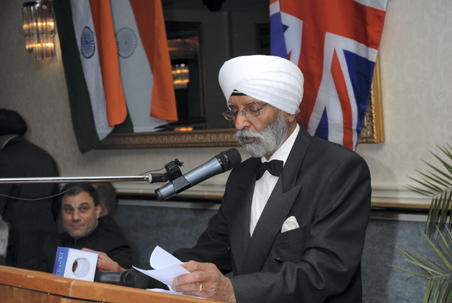In the affidavit filed in the Supreme Court, the Human Resource Development

ministry cited irregualties in giving the 'deemed' tags to these institutions during the time of HRD minister Arjun Singh under the first UPA government.

Human Resource and Development ministry added that the government has approved the recommendations made by the high-powered P N Tandon committee and the Special Task Force, which set up to suggest measures to tackle the problem.
"The Review Committee came across several aberrations in the functioning of some of the institutions deemed to be universities. It found undesirable management architecture where families rather than professional academics controlled the functioning of institutions," the affidavit said.
The Center's study which includes 126 deemed universities across the country found 44 universities completely unfit to be conferred with the deemed tag.
44 other universities will given time to improve themesleves, while the remaining 38 was found to be doing well.
6 universities in Karnataka is on the unfit list. Tamil Nadu has 16 universities out of the 44 derecognize list. Uttar Pradesh has four, Haryana, Uttarakhand, Rajasthan and Maharashtra has three each and one each in Gujarat, Orissa, Andhra Pradesh, Delhi, Bihar.
In a recent statement, HRD minister Kapil Sibal, questioned the functioning of these universities.
Sibal said that some of these universities do not fulfill the eligibility criteria and were found to be lacking in basic infrastructure like university campus and teaching staff.
The affidavit by the center, came after the Supreme Court's directives to act on a PIL, seeking action against deemed universities which flout academic standards and norms and function solely on commercial purpose.
The list of universities which will be derecognized are as follows:
1. Christ College, Bangalore
2. Vignan's Foundation for Science, Technology and Research, Guntur, Andhra Pradesh
3. Lingaya's University, Faridabad
4. St Peter's Institute of Higher Education and Research, Chennai
5. Noorul Islam Centre for Higher Education, Kanyakumari
6. Jaypee Institute of Information Technology, Noida
7.Shobhit Institute of Engineering and Technology, Meerut
8. Sumandeep Vidyapeet, Vadodara, Gujarat
9. Sri Devraj Urs Academy of Higher Education and Reserch, Kolar, Karnataka
10. Yenepoya University, Mangalore
11. BLDE University, Bijapur, Karnataka
12.Krishna Institute of Medical Sciences, Satara, Maharashtra
13.D Y Patil Medical College, Kolhapur, Maharashtra
14. Meenakshi Academy of Higher Education and Research, Chennai
15. Chettinad Academy of Research and Education, Kanchipuram
16. HIHT University, Dehradun
17. Santosh University, Ghaziabad
18. Maharshi Markandeshwar University, Ambala, Haryana
19. Manav Rachna International University, Faridabad
20. Sri Siddhartha Academy of Higher Education, Tumkur, Karnataka
21. Jain University, Bangalore
22. Tilak Maharashtra Vidyapeeth, Pune
23. Siksha "O" Anusandha, Bhubaneswar
24. Janardan Rai Nagar, Udaipur, Rajasthan
25. Institute of Advanced Studies in Education of Gandhi Vidya Mandir, Sardarshahr, Rajasthan
26. Mody Institute of Technology, Sikar, Rajasthan
27. Dr MGR Educational and Research Institute, Chennai
28. Saveetha Institute of Medical and Technical Sciences, Chennai
29. Kalasalingam Academy of Research and Education, Virdhunagar, Tamil Nadu
30. Periryar Maniammai Institute of Science and Technology, Thanjavur
31. Academy of Maritime Education and Training, Chennai
32. Vel's Institute of Science, Technology and Advanced Studies, Chennai
33. Karpagam Academy of Higher Education, Coimbatore
34. Vel Tech Rangaraja Dr Sagunthal R&D Institute of Science, Chennai
35. Gurukul Kangri, Haridwar
36. Grapich Era University, Dehradun
37. Nehru Gram Bharati Vishwavidyalaya, Allahabad
38. Sri Balaji Vidyapeeth, Puducherry
39. Vinayaka Mission's Research Foundation, Salem, Tamil Nadu
40.Bharath Institute of Higher Education And Research, Chennai
41. Ponnaiya Ramajayam Institute of Science and Technology, Thanjavur, Tamil Nadu
42. Nava Nalanda Mahavira, Nalanda, Bihar
43. Rajiv Gandhi National Institute of Youth Development, Sriperumbudur, Tamil Nadu
44. National Museum, Institute of the History of Art Conservation and Musicology, Janpath, New Delhi.


















